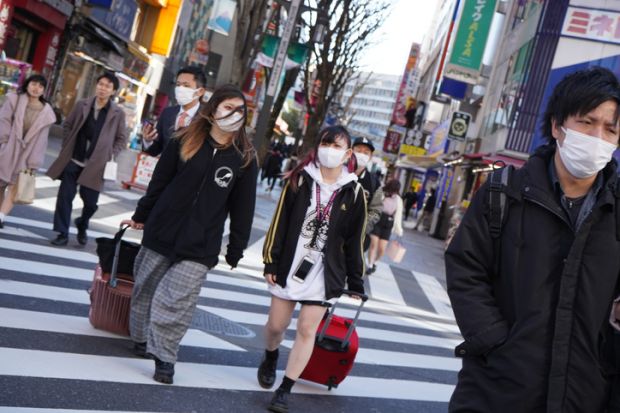About 80 per cent of Japanese universities and junior colleges will conduct both online and in-person classes in the autumn term, according to a government survey of more than 1,000 institutions.
Among the institutions choosing blended learning, most said that in-person instruction – such as laboratory work or small seminars − would make up 30 to 50 per cent of all teaching and learning.
Only 20 per cent of institutions would go back to full face-to-face instruction, according to the survey by the Ministry of Education, Culture, Sports, Science and Technology (MEXT). This is despite the fact that Japan, a country of 127 million people, has had fewer than 1,500 total Covid deaths and infection numbers are falling.
In fact, the percentages for online teaching for the autumn term are only slightly lower than for the spring, when 90 per cent of universities conducted online classes and Covid cases were still rising.
The shift to digital has persisted even as about 90 per cent of surveyed universities and colleges have reopened some physical facilities.
In a September update, the MEXT said it would invest $95 million (£74 million) in university distance learning. It also waived a previous rule that capped online instruction to 60 credits per degree course.
Experts point to a variety of reasons for keeping classes online, even as Covid-19 risks remain relatively low, globally speaking.
Futao Huang, a professor at Hiroshima University’s Research Institute for Higher Education, told Times Higher Education that online learning would dominate “so long as there are risks in the spread of Covid”.
Undergraduate liberal arts courses, for example, would be held digitally as they normally require seating large numbers of students in one lecture hall. However, it would be difficult for universities to go fully online, due to the need for laboratory or other hands-on work.
Professor Huang has seen a marked shift in teaching behaviours. According to pre-Covid surveys of Japanese university faculty, about 90 per cent relied on in-person lectures and fewer than 20 per cent used online instruction. “These proportions were much less than those in Australia, the US, the UK and even China,” he said.
Akiko Morozumi, an associate professor at the University of Tokyo’s Graduate School of Education, told THE that “we are concerned about the spread of the infection towards winter. There are also circumstances in which the classrooms at Japanese universities are too small to avoid congestion.”
She said the crisis was “an opportunity to realise the goodness and potential of online education. It will become even more indispensable as more students learn in such an environment.”
Register to continue
Why register?
- Registration is free and only takes a moment
- Once registered, you can read 3 articles a month
- Sign up for our newsletter
Subscribe
Or subscribe for unlimited access to:
- Unlimited access to news, views, insights & reviews
- Digital editions
- Digital access to THE’s university and college rankings analysis
Already registered or a current subscriber? Login







